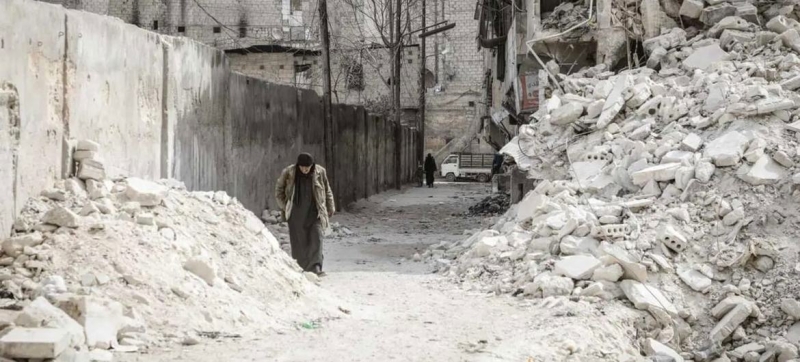
Aleppo, photo from the archive. Escalation in Syria: attacks on medical facilities and civilian casualties Peace and security
The ongoing escalation of violence in northwest Syria has left civilians dead and injured, with attacks increasingly targeting health facilities, the UN warned on Tuesday.
Renewed fighting by the Hayat Tahrir al-Sham (HTS) terrorist group and other armed groups has engulfed parts of Aleppo, Idlib and Hama, violating frontlines that have remained unchanged since 2020.
Jeremy Lawrence, a spokesman for the UN Human Rights Office (OHCHR), told reporters in Geneva of “a number of deeply worrying incidents resulting in numerous civilian casualties, including women and children, in attacks by both HTS and pro-government forces.”
Strikes on Educational Facilities
“The fighting is destroying and damaging civilian objects, including medical facilities, educational buildings and food markets,” he added.
OHCHR is verifying reports of deadly attacks on civilians, including reports that four civilians were killed on 29 November when HTS struck an area housing the Aleppo University dormitories, Lawrence said. “According to information collected by our office, all of the victims were university students, and many other students fled the campus after that,” he added.
International Commitments
The OHCHR spokesperson also drew attention to an incident on 1 December that left 22 civilians dead, including three women and seven children, and at least 40 injured, “reportedly as a result of multiple airstrikes by pro-government forces in Idlib,” which hit a local market and five residential areas.
“We remind all parties of their obligations and responsibilities under international human rights and humanitarian law: civilians and civilian infrastructure must be protected,” he stressed.
The UN Commission of Inquiry on Syria warned in a statement on Tuesday that “the brutality of the past must not be repeated.”
Fragile humanitarian access
In turn, the representative of the UN Office for the Coordination of Humanitarian Affairs (OCHA) Jens Laerke emphasized that the situation is “volatile and constantly changing.” The office was forced to suspend its activities in some areas due to security threats and the closure of many roads.
According to OCHA, at the beginning of 2024, about 16.7 million Syrians already needed humanitarian assistance. Healthcare system Christina Bethke from the World Health Organization (WHO) office in Syria said that specialized hospitals to which emergency services evacuate patients from Aleppo are already “overwhelmed” due to numerous cases of injuries and wounds. She said doctors and nurses were “working around the clock to save lives, even at great risk to themselves and their families.”
Read also:
Syria crisis escalates: UN chief demands immediate ceasefire
Speaking from Damascus, Bethke stressed that dangerous conditions and restrictions on movement have forced some 65 non-governmental organizations in Aleppo and Idlib to suspend their activities, further increasing the burden on health facilities. Some of the largest hospitals in Idlib and Aleppo are now forced to provide services only for emergencies, leaving other patients unable to receive care.
In the city of Aleppo, home to more than two million people, more than 100 health facilities were functioning just a week ago, but now a maximum of eight hospitals are still partially operational, the WHO spokeswoman said.
She added that airstrikes in Idlib on Monday caused significant damage to health facilities, including a university hospital, a maternity hospital and a building housing the local health authority.
Since November 27, WHO has received reports of at least six attacks on health facilities in Syria. Betke recalled that health facilities are protected by international humanitarian law.
Legacy of Conflict
Syria’s health system has already been damaged by nearly 14 years of armed conflict, and public health challenges are exacerbated by the escalation, Betke stressed. For example, the risk of waterborne diseases and respiratory infections is increasing. WHO also recalled that in 2022–2023, a cholera outbreak broke out in Aleppo and Idlib, while the 2023 earthquake damaged water and sewage networks.
Many families in Syria have already faced repeated displacement, including nearly half a million people who fled Lebanon in recent months. Some are again being forced to leave their shelters due to the escalation of hostilities, and their situation is becoming increasingly difficult as winter approaches.
As of early 2024, 7.2 million people were already internally displaced within the country, almost half of them in the northwest. The current military escalation is creating challenges for delivering vital aid to them.
